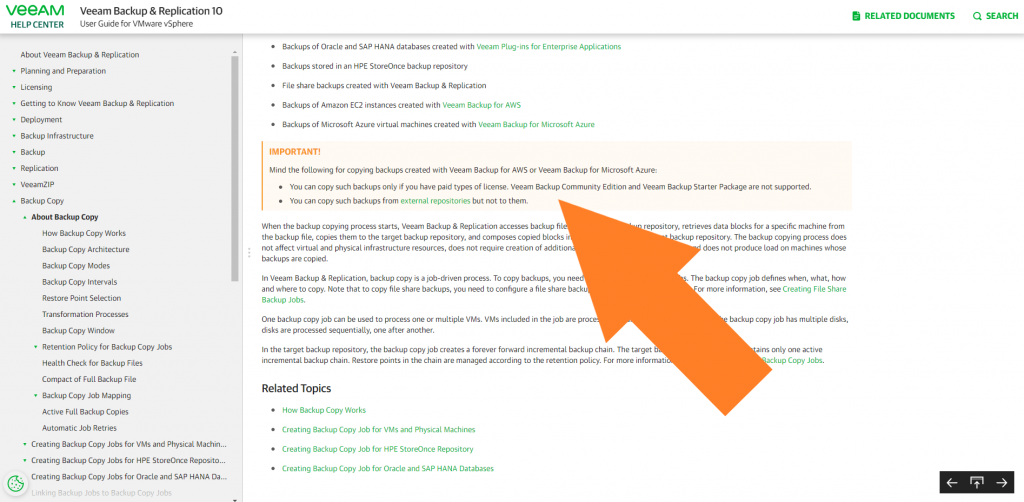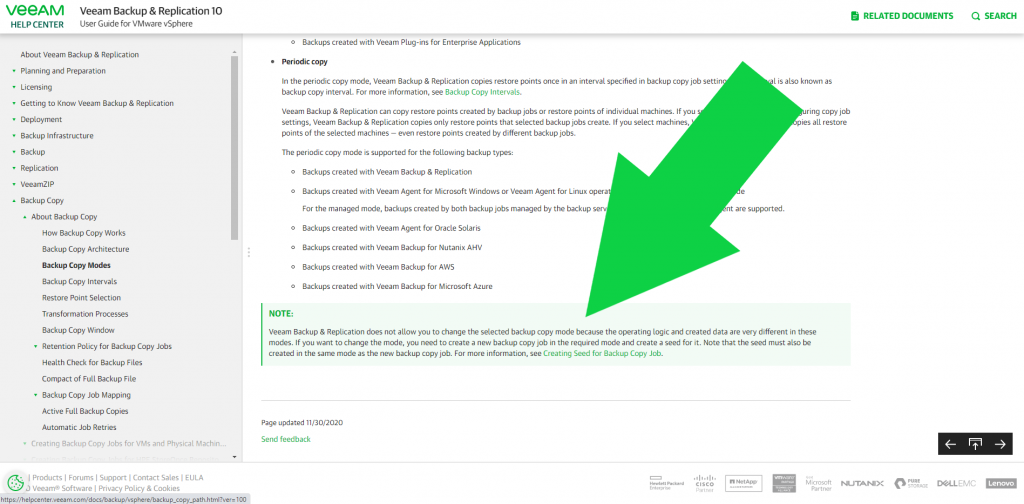This one has been a long-time coming. I’ve been using Veeam Backup & Replication and Veeam ONE since 2014 and, in anger, since v8.0. I’ve designed, deployed, and managed Veeam solutions; however, I’ve never gotten around to obtaining any Veeam certifications.
If you’ve ever met me in person, I’ve likely told you how much I love the Veeam Availability Suite and how cool it is that Veeam keeps cramming-in so many awesome features with every release. Despite so many great features, Veeam still retains the ability to keep things simple, and I’m a fan of keeping things simple.
Yesterday I finally sat and passed the Veeam Certified Engineer exam, so I thought I’d spend a few moments outlining a few items which worked well for me and which might be areas of interest for anyone working towards this certification.
Resources
Official Veeam Training – Firstly, there’s no getting away from the fact that you’ll need to attend the official Veeam Availability Suite v10: Configuration and Management course. In fact, it’s a prerequisite of sitting the exam. This is a three day, instructor-led course, and will cover the entire Veeam Availability Suite (Veeam Backup & Replication and Veeam ONE).
Official Study Guide – Following attendance on the course, the VMCE 2020 Exam Specification details the exam objectives and includes links to Veeam’s awesome online user guides (more on the latter below).
The study guide also details the percentages each objective represents within the exam – it goes without saying that you should study each objective closely, however, where Objective 1 (Key concepts of a successful backup strategy) equates to 2% of the overall exam, Objective 2 (Building backup capabilities) equates to a whopping 38%.
User Guides – As mentioned above, the user guides for both vSphere and Hyper-V are simply superb. Whenever you feel you need clarification, search the user guides. I practically lived in the user guides in the weeks leading up to my exam and, as I’ve never been a Hyper-V guy, the Hyper-V guide was invaluable.
It’s also worth pointing out – pay special attention to any ‘Important’ or ‘Note’ sections within the guides. These areas can sometimes provide crucial information relating to maximums and limitations, as well as differences between vSphere and Hyper-V functionality which you might be tested on in the exam.


Release Notes – Again, there’s a lot of new features in version 10, so make sure you are well versed in the main features. Reviewing the below documentation certainly won’t harm.
Practice Exams – Practice makes perfect and, although these practice questions aren’t to be taken as official in any way, they do give you an idea of what areas you might be tested on within the real exam. Rasmus’ practice exams are perfect for testing yourself, and they are complemented by the YouTube videos which walk you through each of his example questions in detail. Well worth a visit!
- Rasmus Haslund VMCE 2020 Practice Exams
- Rasmus Haslund VMCE 2020 Practice Exam Walkthrough/Study Guide YouTube Playlist
Lab Work – If you have access to a lab environment then you can quickly and easily spin-up a Veeam environment and, unlike other solutions, it can be a fairly lightweight environment to spin-up.
My lab consists of the below elements and, despite looking rather large in terms of resource allocation, all disks are thin provisioned, so used disk space for a lab running VM backups, copy jobs, replication, and SureBackup jobs for validation and on-demand sandbox environments currently equates to just 444.17 GB. If you need to be a little more conservative and just play around with the interface, you can easily get by with a smaller lab. Feel free to contact me if you’d like to have a chat around this.
| Server | vCPU | Memory (GB) | Storage (GB) |
| Domain Controller | 1 | 1 | 40 (OS) |
| VMware ESXi Host – Site A | 4 | 32 | 32 (OS) 250 (Local Storage) |
| VMware ESXi Host – Site B | 4 | 32 | 32 (OS) 250 (Local Storage) |
| VMware vCenter Server | 2 | 12 | 50 |
| Veeam Backup Server, Proxy Server, Repository – Site A | 4 | 16 | 90 (OS) 250 (OS) |
| Veeam Proxy Server, Repository – Site B | 2 | 4 | 90 (OS) 100 (Repo) |
| Totals | 17 | 97 | 1,184 |
This was a good exam process, and it’s a certification I’ve been meaning to obtain for years. Making the jump into VMware consultancy last year, I didn’t think I’d get much chance to play with Veeam solutions again, but like most things in life, things change, and I’m very thankful that I can continue working with this wonderful product.
In summary, and after sitting the course, absorb the Official Study Guide/exam specification. The guide clearly indicates that the exam is quite heavily orientated around building backup capabilities (38%), testing backup and replication (18%), building replication capabilities (10%) and recovery from replica (8%), but don’t scrimp on restoring from backup (10%), or monitoring and reporting (8%).
Also, if you’re experienced in vSphere and not so much/at all in Hyper-V, the relevant User Guide will become your best friend. If you have access to a lab or work environment, then you have all the tools you need to pass this exam.
Lastly, visit Rasmus’ blog and YouTube playlist. Both are a treasure-trove of information.
If you have any other questions about this exam, please don’t hesitate to get in touch.

Curious how you approached studying for the exam?
Flash cards? Quizzes? Labs?
How many hours per day/week?
How long did you study for before taking the exam?
Hi Christopher, apologies for the delay in coming back to you. I utilised my own lab in conjunction with the official course notes and exam syllabus. The official study guides, user guides, and practice exams mentioned in this article are all brilliant resources, as are the excellent YouTube videos by Rasmus Hasland.
Time-wise, I crammed as much time into this as possible and took the exam after three weeks of heavy study and practice. Remember, everything you’ll need to focus on is detailed in the syllabus, so make sure that it’s your best friend while preparing for the exam.
Good luck!